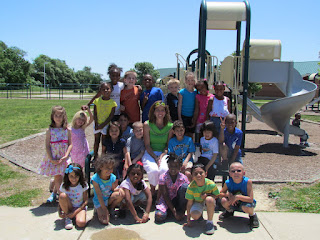 |
| The CBR project has been like a maze but the end is in sight! |
|
|
|
|
|
I watched Wimba this week and wow, a lot of awesome projects were presented!!! Great job everyone!!! I wish I could have been there as planned but thanks to the weather, I am in Delaware and on Tuesday, we had an earthquake and now we are bracing for Hurricane Irene, our Welcome to School night was changed to Thursday night! Now, our first day of school has been cancelled for Monday already, thanks to Irene!
I sent my presentation to two of my classmates. Here are their comments:
Wow! good job. You blow my 8 little slides away :)
I like the slide theme and pictures. I liked the cartoon.
I didn't see any speaker notes so come of the bullets and material in your slides didn't make sense because I didn't know what you wanted to say about them. For example, the graphs...I saw there were increases, but I don't know those assessments so I wasn't getting the full effect of your achievements.
A couple of the slides had ALOT of information on them. It would more well received to have less on the slide (highlights) and give the full information verbally, using speaker notes. (example: slides 10 and 14)
Also, with slide 10 and 14, the font is noticeably different. It is best to keep it consistent.
Also, instead of having the whole URL on your slides, use a key word in the text and create a hyperlink that you can just click on and that way the gobbledy-gook or those long URLs won't distract your audience.
Good Luck and thanks for the comments on my presentation.
Heidi Faber
Cindy: Here is the feedback for your keynote. I don't know if the teacher will need a copy or not, but if you think so, you can send this to him also if you want.
Your theme choice and colors are really nice.
Your opening slide has a nice touch that parents will really like.
Slide #3 needs a capital letter on one of the bullets. Your cartoon is really awesome.
Slide #6 needs a capital letter on one of the bullets. Your parent picture is a cute touch.
Slide #7 needs a check on the youtube spelling.
Slide #9 needs a capital letter on one of the bullets.
Slides #10 & #14 you might want to consider using the blue font like the rest of the presentation instead of the black.
Hope this helps. Please be sure to send me your feedback on my presentation. You can access it through my blog. Thanks. Cheryl
I have some work to do on my presentation, but thanks to their imput, I have a clear view of what I need to do before the hurricane hits and I have no power!
For those of my classmates who are in Irene's path, Be Safe!!!!
 conference. Being a Kindergarten teacher, I would love to present for this conference. It is known as one of the most sought out conferences to attend and it would be a worthwhile opportunity. In order to present, I must do the following:fill out the presenter application and send them the requested materials. Once these are received, they will notify me if they are interested. Once notified, I will have to do a dry run of my presentation for them to observe. If they are interested then I will be able to present. They normally inform you of their decision within 2 months after receiving all information and materials.
conference. Being a Kindergarten teacher, I would love to present for this conference. It is known as one of the most sought out conferences to attend and it would be a worthwhile opportunity. In order to present, I must do the following:fill out the presenter application and send them the requested materials. Once these are received, they will notify me if they are interested. Once notified, I will have to do a dry run of my presentation for them to observe. If they are interested then I will be able to present. They normally inform you of their decision within 2 months after receiving all information and materials. 












1 comments: